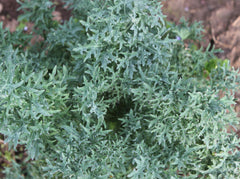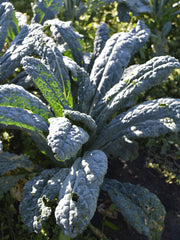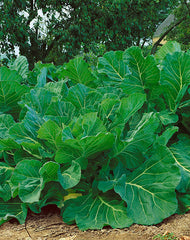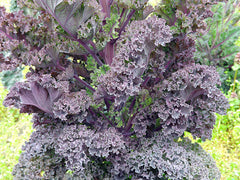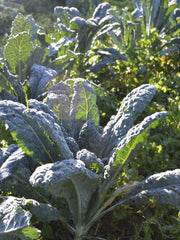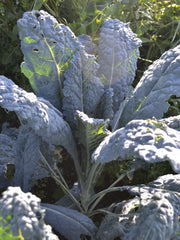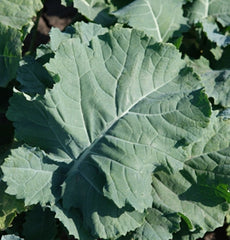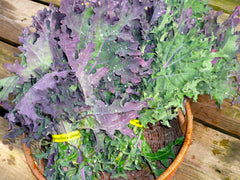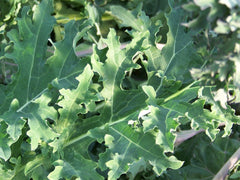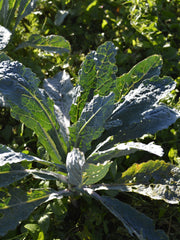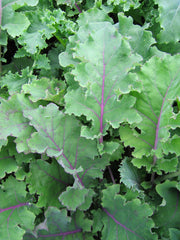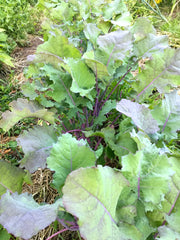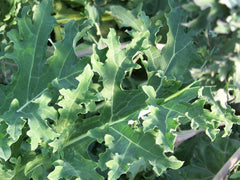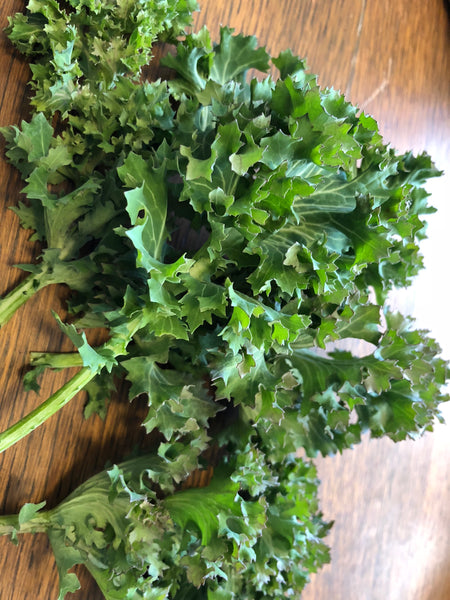True Siberian
Brassica napus pabularia
HOW TO GROW SIBERIAN KALE
Start indoors 4-6 weeks before last frost, plant out 4 weeks before frost. For fall harvest, transplant 13 weeks before first frost, without additional protection. In a hoophouse, you can plant 2-3 weeks later. Plants are hardy when small but may not feed you until spring. Direct sow anytime after last frost up to 6 weeks before first frost. For seed production, plant in late summer in the Pacific Northwest and coastal British Columbia for a more cold hardy plant. Becomes sweeter with frost and edible to about 22–25˚F. Survival at low temps 10˚F or cooler requires good mulch or snow cover to protect from wind freeze. Will cross with rutabagas. Row covers reduce cabbage worms and extend winter harvest. Soil pH 6.1-6.5. Hardiness zones 3-9. Biennial.
Days from maturity calculated from the date of seeding. Average 9,000 seeds per ounce. Average 112M seeds per acre. Federal germination standard: 75%. Usual seed life: 5 years. Isolation distance for seed saving: 1 mile.
Planting Depth 1/4-1/2”
Soil Temp. Germ. 55-75˚F
Days to Germ. 5-15
Plant Spacing 12-18”
Row Spacing 18-30”
Days To Maturity 60-70
Full Sun, Moist Well Drained
Days from maturity calculated from the date of seeding. Average 9,000 seeds per ounce. Average 112M seeds per acre. Federal germination standard: 75%. Usual seed life: 5 years. Isolation distance for seed saving: 1 mile.
Planting Depth 1/4-1/2”
Soil Temp. Germ. 55-75˚F
Days to Germ. 5-15
Plant Spacing 12-18”
Row Spacing 18-30”
Days To Maturity 60-70
Full Sun, Moist Well Drained
True Siberian Seed Count
1 Ounce ≈ 9,450 seeds
.25 Pound ≈ 37,800 seeds
1 Pound ≈ 151m seeds
- 200 Seeds$4.10
- 2000 Seeds$12.50
- 1 Ounce$26.00
- 1/4 lb$54.00
Seed breeder Dr. Alan Kapular writes that this, “hardy biennial salad plant (has) the largest rootstocks of any kale we have seen.” Ideal for wet Pacific Northwest winters, large heavy producing plants. Tolerates wet soils, best producing kale raab in the spring. Tags: Type: Siberian, Color: Green, Specialty: Heavy ...
Seed breeder Dr. Alan Kapular writes that this, “hardy biennial salad plant (has) the largest rootstocks of any kale we have seen.” Ideal for wet Pacific Northwest winters, large heavy producing plants. Tolerates wet soils, best producing kale raab in the spring. Tags: Type: Siberian, Color: Green, Specialty: Heavy Producer, Heritage: Heirloom, Season: Spring Fall Winter.
Learn More
Meet Your Farmer
We promote fair trade, organic practices and environmental responsibility throughout the Restoration Seeds supply chain. Below are the family farmers and seed suppliers who bring our open pollinated seeds to you.
Dancing Bear Farm
Certified Organic by Oregon Tilth
Seed grower since 1998


Dancing Bear Farm is set on 18-acres in the beautiful Williams Creek Valley at the foot of the Siskiyou Mountains in southern Oregon. Family owned and operated, we grow a variety of open-pollinated and heirloom vegetables, herbs, flowers, and seeds. Certified organic since 1998, our goal is to bring you the best variety and quality in fresh produce and seeds.
Reviews
